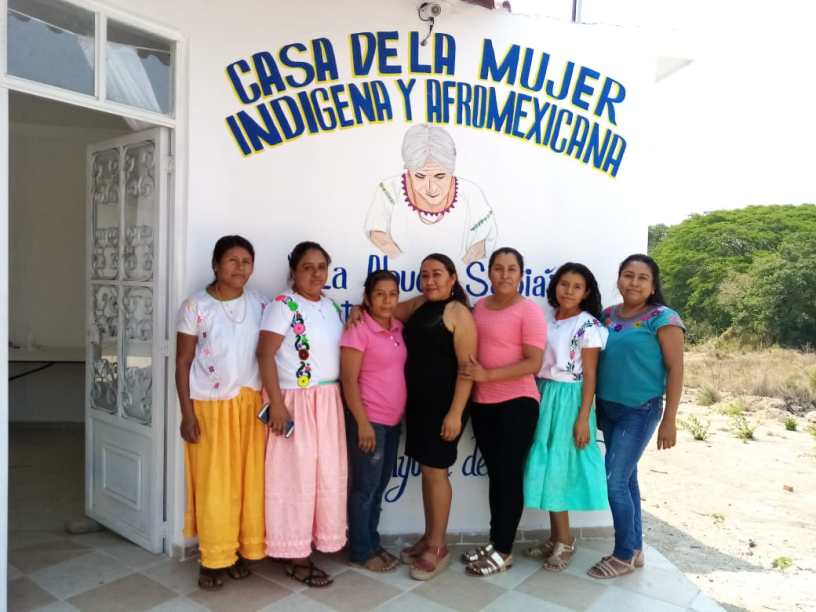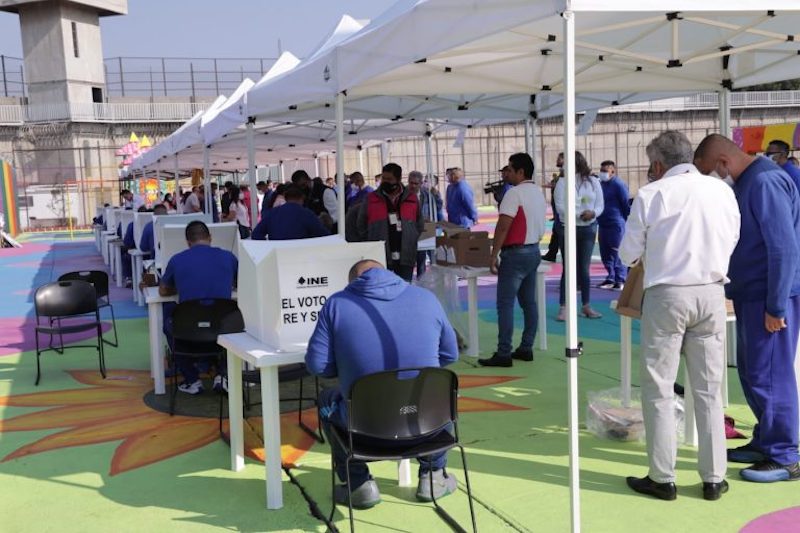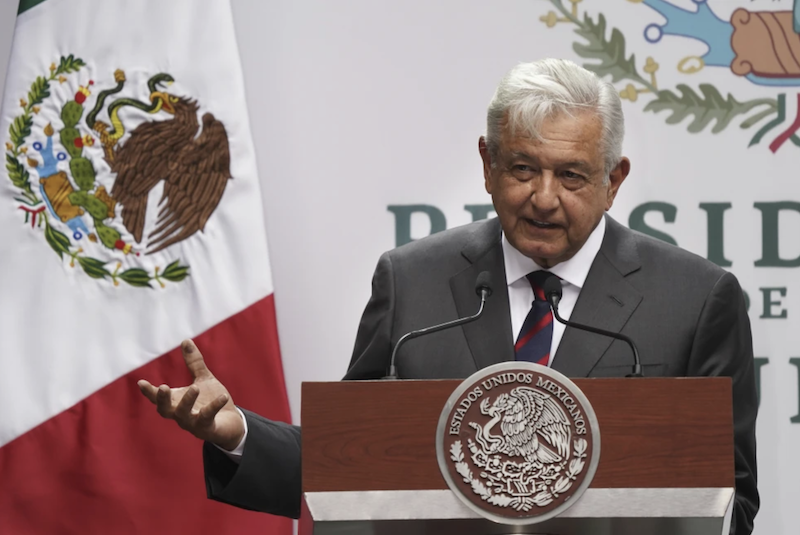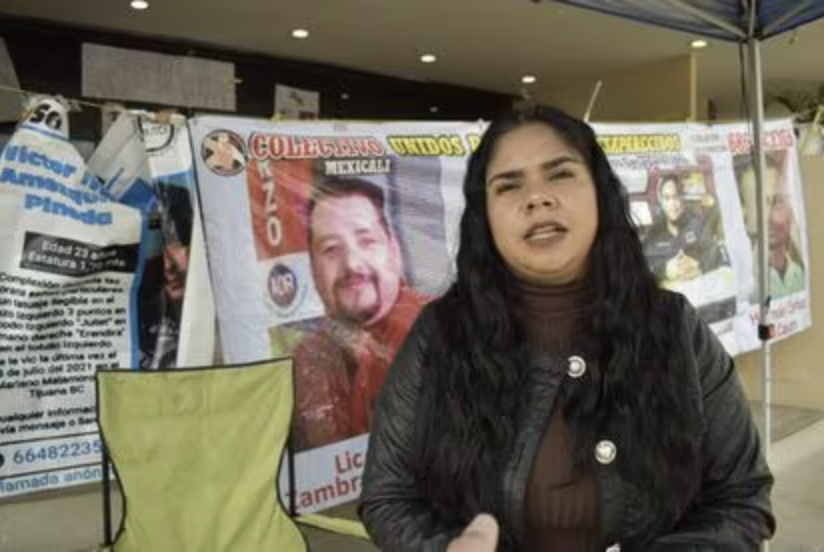10/09/20 (written by vrice) – While COVID-19 has affected various sectors of the Mexican population, indigenous communities—and especially women—have been particularly impacted in the wake of pandemic austerity measures. Budget cuts to Indigenous and Afro-Mexican Women’s Shelters (Casas de la Mujer Indígena y Afromexicana, CAMIs) have led indigenous women to mobilize and increasingly accuse the government of negligence. This unrest challenges claims in President Andrés Manuel López Obrador’s (AMLO) recent government report that his administration has effectively supported women and indigenous communities during the pandemic.

Coronavirus rates in indigenous communities
Approximately 21.4% (25 million) of Mexico’s 120 million citizens are indigenous. Since the outbreak of COVID-19, 1,882 deaths and 15,390 cases of the coronavirus have been registered in Mexican indigenous communities. This data translates into a 12% mortality rate from COVID-19 for indigenous Mexican communities, compared to the national average of 10%. The country currently has the fourth highest number of deaths from coronavirus in the world (79,088).
Indigenous women face disproportionate vulnerabilities
Health and Education
The lack of hospitals in indigenous communities, coupled with pandemic travel restrictions, make seeking medical care even more difficult than for the non-indigenous population. These factors further threaten indigenous women’s access to sexual and reproductive healthcare. Indigenous women already have higher infant mortality rates, at 3.3 deaths for every 1,000 live births, compared to 2.2 deaths for non-indigenous women. Given these rates, the prenatal care and birthing assistance provided by CAMIs becomes even more indispensable. In addition, 19.9% of indigenous populations lack access to water and 24.6% do not have sewage systems. Compliance with COVID-19 safety measures, like frequent hand washing, is unfeasible without access to these resources. Further threats to indigenous women’s health arise from gender based violence. According to the United Nations Educational, Scientific and Cultural Organization (UNESCO) México, the rural location of most indigenous communities impedes the ability of women to escape increasing domestic violence rates during pandemic lockdowns.
COVID-19 is also having a significant effect on the education indigenous women receive. In indigenous communities, 23% of individuals are already illiterate, compared to 4.2% in the general population. Women in indigenous communities also have even fewer years of schooling than indigenous men, whereas the inverse is true amongst the non-indigenous population. While the average woman in Mexico receives 9.1 years of schooling, indigenous women receive only 6.2 years. School closures due to COVID-19 may increase the rates at which indigenous children abandon their studies, particularly indigenous girls, as has occurred during past pandemics according to UNESCO México. The government is currently pursuing a “Learn from Home” (Aprender en casa) program where students can watch classes on television or access them via the internet. It is also worth noting that only 40% of indigenous communities have 4G coverage, meaning the majority of individuals cannot attend online classes.
Income and Employment
Studies by the National Council for the Evaluation of Social Development Policy (El Consejo Nacional de Evaluación de la Política de Desarrollo Social) indicate that 80% of indigenous Mexicans work in the informal economy. As a result, they do not have access to benefits like unemployment insurance or labor protections. Coronavirus lockdowns have also hindered activities in the informal sector, leading to a loss of vital income for survival. UN Women and UNESCO identify how this diminution of income disproportionately impacts the food security of indigenous single mothers.
Closures exacerbate the already disproportionate access of indigenous women to the labor market compared to non-indigenous women. Only 26% of the former participate in some form of labor compared with 46% of the latter. Moreover, stay at home orders have increased the amount of unpaid, domestic labor with which indigenous women are tasked. Nearly 65% of indigenous women 12 years of age and older perform this uncompensated labor, compared with only 35.3% of indigenous men. Financial vulnerability is heightened by how even before the pandemic, indigenous individuals earned monthly wages 45.5% lower than non-indigenous individuals. Indigenous women earn less than their male counterparts, making 3,840 pesos ($171.30 USD) each month compared to males’ 4,155 pesos ($185.35 USD). Indigenous communities are also more susceptible to financial burdens from medical treatment for COVID-19 and other health ailments. Approximately 82% of the non-indigenous population possesses social security, which provides healthcare, while over 77% of the indigenous population does not. Thus, the 69.5% of the indigenous population currently living in poverty is likely to increase due to COVID-19.
Resistance from Indigenous Communities
On May 11, amidst rising COVID-19 death rates and AMLO’s announcement of austerity measures, indigenous artisan women gathered outside the National Palace in Mexico City to protest for government assistance. Demands ranged from potable water to economic aid, as lockdowns have shut down the informal economy on which many of these women rely for income. Francisca de la Cruz, coordinator of the CAMI of Ometepec, in the state of Guerrero, reflected the demonstrators’ frustrated sentiment, stating that the government does not prioritize the problems of indigenous women. Global NGOs like Amnesty International rallied behind the rights of indigenous women during the pandemic, by releasing a letter template to send complaints about the suspended CAMI funding to Mexico’s Minister of Interior. AMLO’s failure to issue government assistance to indigenous communities, while simultaneously advancing construction on the Maya Train (Tren Maya) during the pandemic sparked additional unrest and civil resistance.

The Government’s Response
President Andrés Manuel López Obrador (AMLO) announced COVID-19 austerity measures at the end of March, which included the indefinite suspension of the Indigenous Rights Program (Programa de Derechos Indígenas) budget. This program is managed by the National Institute of Indigenous Peoples (Instituto Nacional de los Pueblos Indígenas, INPI) and helps fund 35 Indigenous and Afro-Mexican Women’s Shelters (CAMIs). These spaces are often the only sources of legal and medical aid for indigenous and Afro-Mexican women. A third of the CAMIs were forced to shut down in May due to a lack of funding. They have since received only half of the 30 million pesos ($1,373,445 USD, approximately $25,000-40,000 USD per shelter) originally earmarked for them. The National Network of Shelters for Indigenous Women denounced the budget cuts for reducing the amount of resources available to women amidst increasing rates of domestic violence during COVID-19 lockdowns. According to Mexican federal authorities, the first three weeks of lockdown saw a 30-100% increase in violence against women.
On September 1, AMLO issued his second government report, which cited significant support from his administration for indigenous communities and women during the COVID-19 pandemic. News outlet Animal Político critiqued how the report did not mention that only half of the original budget was distributed, or that one-third of CAMIs were forced to close. Echoing the sentiment of feminist activists, Animal Político argues that the government’s failure to financially support CAMIs contradicts AMLO’s statements that services for women experiencing domestic violence are “essential” during the pandemic. Moreover, the report fails to cite any statistics to justify its claim that government support was provided to CAMIs to continue providing aid for indigenous and Afro-Mexican women experiencing gender-based violence (e.g. consultations, translations, case follow-up). The report claims that 30,430 women received such support through CAMIs during the pandemic (from September 1, 2019-June 30, 2020), even though a footnote on the document reveals this data is solely from the last quarter of 2019. Thus, the statistic provides no insight into the care women received via CAMIs during the outbreak and augmentation of COVID-19 rates.
The government defended itself against these accusations of neglect by promoting its “Guide for Assistance to Indigenous Communities and Afro-Mexicans during the health emergency created by the SARS-CoV-2 (COVID-19) virus” (Guía para la Atención de Pueblos y Comunidades Indígenas y Afromexicanas ante la emergencia sanitaria generada por el virus SARS-CoV-2 (COVID-19)). Initially issued in Spanish on May 8, the guide was released on May 21 in 35 indigenous languages to make information about COVID-19 and safety precautions more widely accessible. These indigenous language versions were released almost three months after the first COVID-19 case was registered in Mexico. During a press conference in the National Palace at the end of August, Adelfo Regino Montes, the head of the National Institute of Indigenous Peoples (Instituto Nacional de los Pueblos Indígenas, INPI), praised the guide for its crucial role in preventing the spread of COVID-19 in indigenous communities. However, as there are 68 recognized indigenous languages in Mexico, the report is only available in a little over half of these.
As COVID-19 rages on, inadequate government assistance threatens to amplify the obstacles indigenous Mexican women already face in regard to education, health, income, and employment.
Sources
“Patrocinan extranjeros a ONG anti Tren Maya.” El Universal, Aug. 27, 2020.
“Urgent Action: Women’s Rights Protection at Risk.” Amnesty International, June 29, 2020.
“Pueblos indígenas y COVID-19: una mirada desde México.” UNESCO, April 8, 2020.
ONU Mujeres & UNESCO México. “Mujeres indígenas en contexto: Covid-19 ¿Cómo les impacta?” 2020.
Vega, Margarita. “Aquí no hay clínica, ni médico, ni medicinas…” Animal Político.




